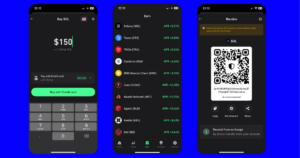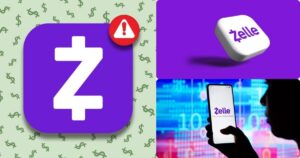In the world of cryptocurrency, securely storing SOL (Solana) is of utmost importance. To help you choose the most suitable storage solution, this article will introduce popular wallets supporting SOL and explain the basic components of a SOL wallet. Let’s explore these options to effectively protect your assets.
1. What is a SOL wallet?
A SOL wallet, also known as a Solana Wallet, is a storage tool for the digital currency SOL and standard SPL (Solana Program Library) tokens on the Solana blockchain. With this wallet, users can easily conduct transactions such as sending and receiving SOL, as well as SPL tokens. Additionally, the Solana wallet allows users to participate in staking, add liquidity, or store NFTs (Non-Fungible Tokens) on the Solana platform.
What sets SOL wallets apart is their security and the fact that full control is in the hands of the user. This means that no one, including developers, can intervene in your wallet or access your assets. Solana wallets ensure high privacy and no external interference.
It’s important to note that Solana is not compatible with the Ethereum Virtual Machine (EVM), which creates a clear distinction between Solana Web3 wallets and EVM-based Web3 wallets. Therefore, if you wish to interact with dApps (decentralized applications) or resources on the Solana network, you should use Solana-specific wallets.
2. Types of SOL storage wallets
2.1 Web wallets
Web wallets provide a convenient solution for storing SOL and tokens on the Solana platform via a browser without requiring software installation. This is the ideal choice if you want quick and easy access to your assets from any device. Popular web wallets include SolFlare, Sollet, and Math Wallet.
2.2 Software wallets
Software wallets offer enhanced security features and additional extensions, allowing users to have better control over their assets. You can store SOL directly on your personal device while utilizing security tools such as PIN codes and two-factor authentication. Notable software wallets in the community include Coin98 Wallet and Trust Wallet.
2.3 Hardware wallets
If you are looking for optimal security, hardware wallets are the top choice. These wallets store private keys offline, ensuring that your assets are protected from online threats. Some well-known hardware wallets include Ledger Nano and Trezor.ư

3. Components of a SOL wallet
- Wallet address: A wallet address is a string of characters and numbers used to receive assets into your Solana wallet. When someone wants to send you coins, they only need your wallet address to complete the transaction.
- Passphrase: A passphrase is a type of security password, typically consisting of 12 random words in English. The passphrase helps users recover their wallet in case they lose or forget their login details.
- Private key: A private key is a personal code used to access your wallet, similar to a bank password. Each Solana wallet has its own unique private key, and securing it is extremely important. Never share your private key with anyone, as exposing this key can lead to the loss of your assets.
4. How to use a Solana wallet
A Solana Wallet is not only a tool for storing SOL and SPL tokens but also a gateway for participating in activities on the Solana blockchain. You can easily send and receive SOL, SPL tokens, participate in staking, add liquidity, store NFTs, and engage in many other services.
Step 1: Create a Solana wallet
To begin, you need to create a Solana wallet to store SOL and SPL tokens. This can be quickly done using popular wallet services like Phantom, Sollet, or Solflare. When creating the wallet, you will receive an important recovery phrase (seed phrase), so make sure to store it in a secure place to avoid asset loss.
Step 2: Connect the wallet to a Trading Application
Once your wallet is set up, you need to connect it to trading applications on the Solana platform. A typical example is Phantom Wallet, a popular application that allows you to connect to decentralized exchanges (DEX) and decentralized apps (dApps). To log into your wallet, you will use your passphrase or private key.
Step 3: Send and receive tokens
Sending and receiving tokens on a Solana wallet is straightforward. To send tokens, simply select the “Send” option, enter the recipient’s wallet address, and specify the amount of tokens you wish to send. To receive tokens, provide your wallet address to the sender. Be sure to double-check the address, as entering the wrong address could result in asset loss.
Step 4: Swap Tokens
If you want to swap tokens on the Solana platform, you can use an application like Phantom Wallet. In this app, choose the token pair you wish to swap, enter the amount, and confirm the transaction. Once the transaction is completed, you will see the new tokens in your wallet.
Note:
- Before performing any transactions, always verify the information to ensure you don’t send tokens to the wrong address or make other errors.
- Protecting your personal information, especially your passphrase and private key, is crucial.
- Never share these details with anyone, and ensure they are stored securely.

Choosing the right wallet for storing SOL is vital to protect your assets from potential risks. Consider your options carefully and secure them properly to ensure the safety of your investment.















